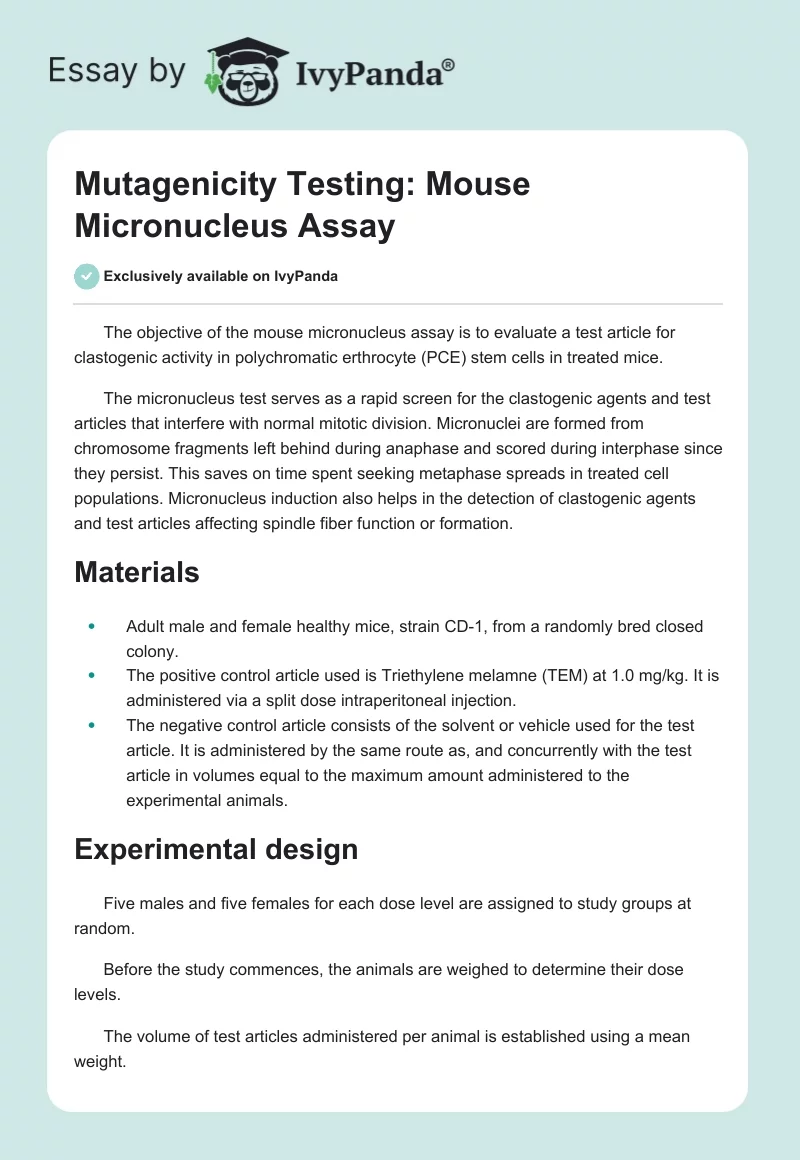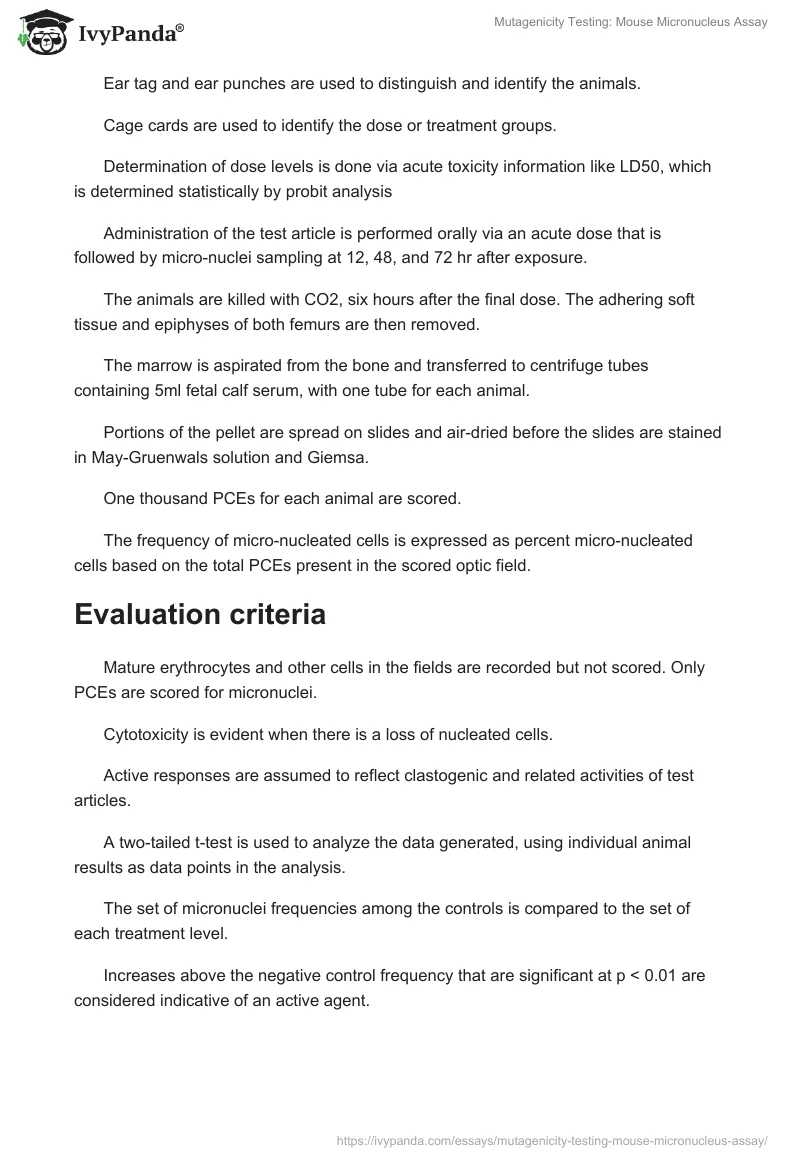The objective of the mouse micronucleus assay is to evaluate a test article for clastogenic activity in polychromatic erthrocyte (PCE) stem cells in treated mice.
The micronucleus test serves as a rapid screen for the clastogenic agents and test articles that interfere with normal mitotic division. Micronuclei are formed from chromosome fragments left behind during anaphase and scored during interphase since they persist. This saves on time spent seeking metaphase spreads in treated cell populations. Micronucleus induction also helps in the detection of clastogenic agents and test articles affecting spindle fiber function or formation.
Materials
- Adult male and female healthy mice, strain CD-1, from a randomly bred closed colony.
- The positive control article used is Triethylene melamne (TEM) at 1.0 mg/kg. It is administered via a split dose intraperitoneal injection.
- The negative control article consists of the solvent or vehicle used for the test article. It is administered by the same route as, and concurrently with the test article in volumes equal to the maximum amount administered to the experimental animals.
Experimental design
Five males and five females for each dose level are assigned to study groups at random.
Before the study commences, the animals are weighed to determine their dose levels.
The volume of test articles administered per animal is established using a mean weight.
Ear tag and ear punches are used to distinguish and identify the animals.
Cage cards are used to identify the dose or treatment groups.
Determination of dose levels is done via acute toxicity information like LD50, which is determined statistically by probit analysis
Administration of the test article is performed orally via an acute dose that is followed by micro-nuclei sampling at 12, 48, and 72 hr after exposure.
The animals are killed with CO2, six hours after the final dose. The adhering soft tissue and epiphyses of both femurs are then removed.
The marrow is aspirated from the bone and transferred to centrifuge tubes containing 5ml fetal calf serum, with one tube for each animal.
Portions of the pellet are spread on slides and air-dried before the slides are stained in May-Gruenwals solution and Giemsa.
One thousand PCEs for each animal are scored.
The frequency of micro-nucleated cells is expressed as percent micro-nucleated cells based on the total PCEs present in the scored optic field.
Evaluation criteria
Mature erythrocytes and other cells in the fields are recorded but not scored. Only PCEs are scored for micronuclei.
Cytotoxicity is evident when there is a loss of nucleated cells.
Active responses are assumed to reflect clastogenic and related activities of test articles.
A two-tailed t-test is used to analyze the data generated, using individual animal results as data points in the analysis.
The set of micronuclei frequencies among the controls is compared to the set of each treatment level.
Increases above the negative control frequency that are significant at p < 0.01 are considered indicative of an active agent.


